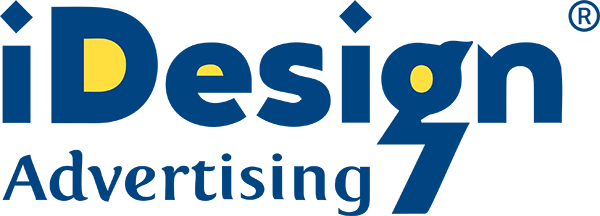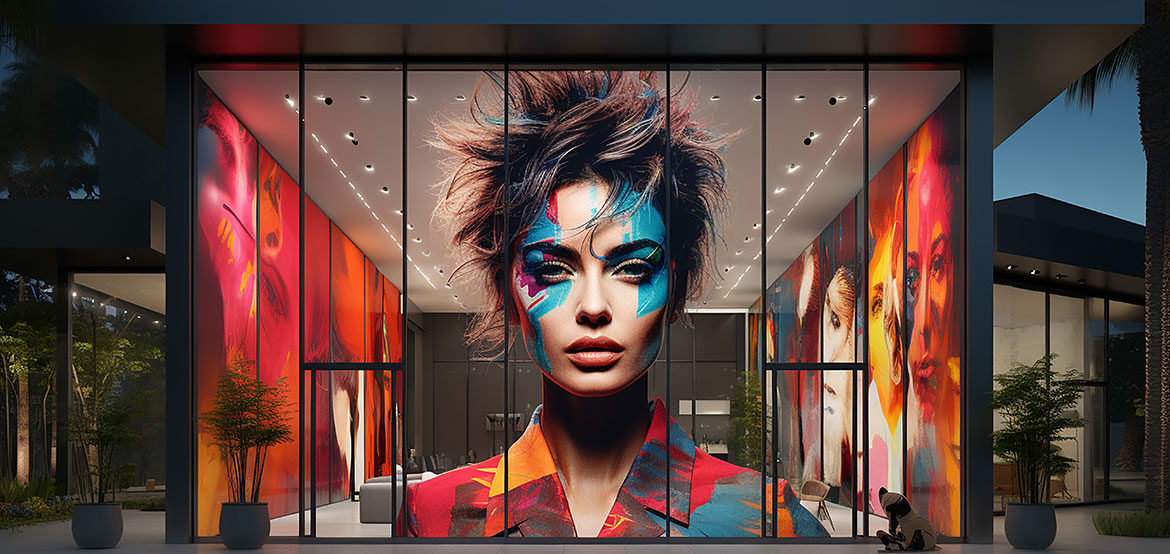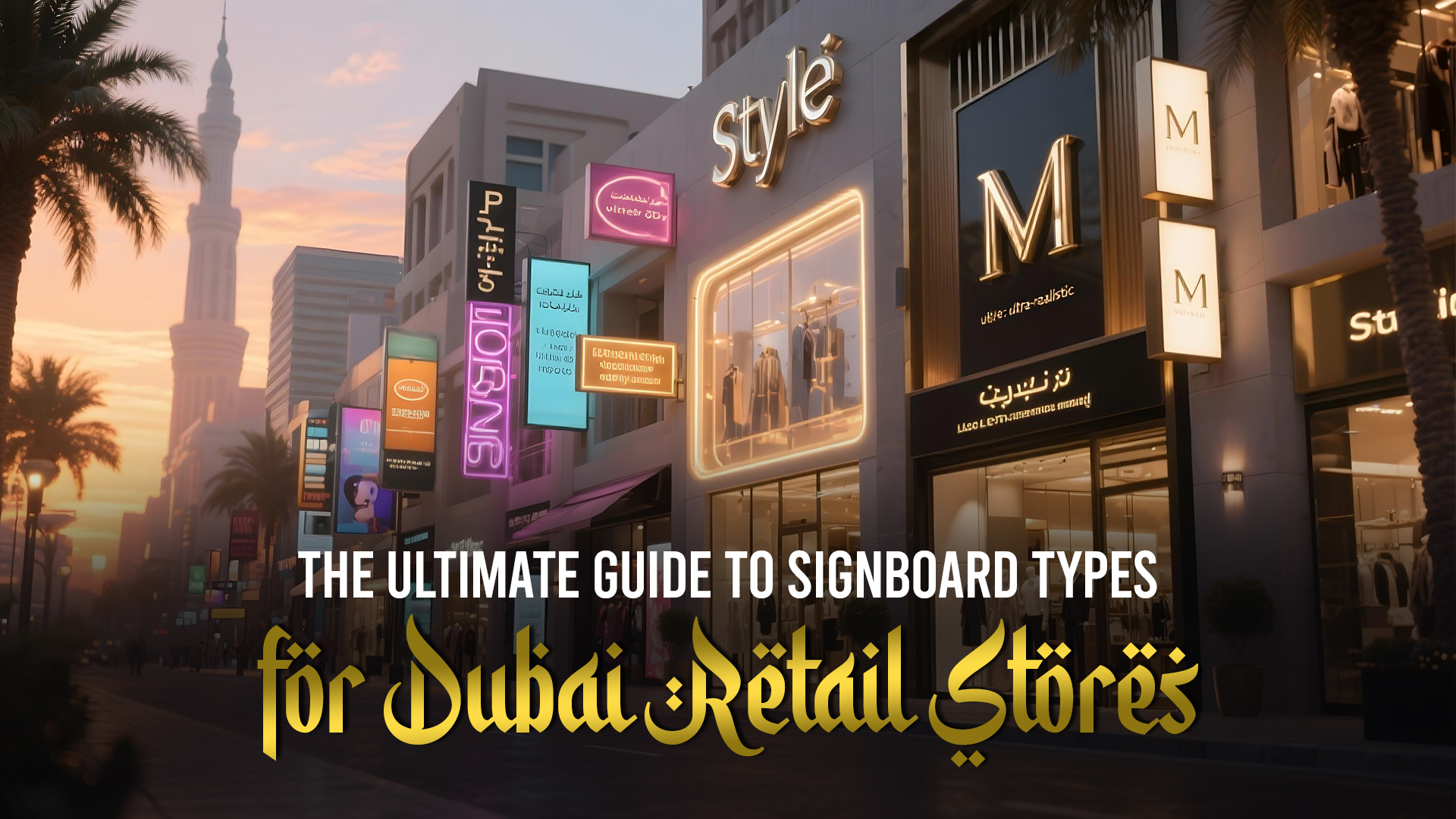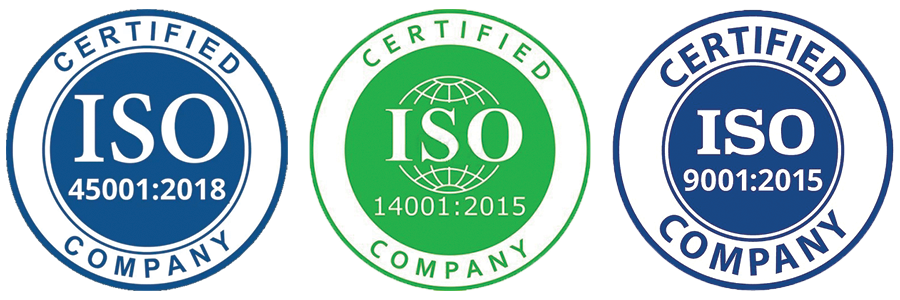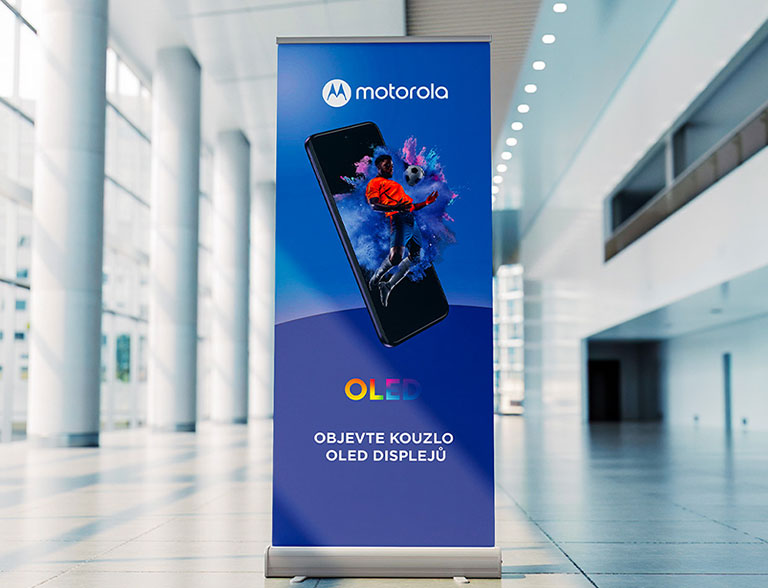
Fabric lightboxes above LED lightboxes revolutionize the way brands present graphics. In contrast to traditional framed LED displays, the fabric lightbox offers a frameless, elegant look, vibrant backlight colors, and simple graphics swaps. Whether for retail stores, exhibitions, or office interiors, these modern displays create a powerful visual impact while being lightweight, flexible, and energy-efficient.
Learn what fabric light boxes are in this guide. Why are more companies opting for fabric light boxes instead of LEDs for a more intelligent and fashionable display solution? What are the special advantages of fabric light boxes over LEDs?
What Are Fabric Light Boxes?
Fabric Lightbox is a modern sign solution that combines an aluminum lightbox frame with living fabric graphics. This is illuminated with LED lighting. The printed fabric stretches firmly above the frame with Silicone Edge Graphics (SEG) to create a seamless, frameless look. In contrast to bulky traditional displays, fabric lightboxes for walls are designed, free or ceiling pieces that even offer high quality backlighting. Using illuminated fabrics and edge lighting technology, they awakened advertising graphics with vibrant colours and outstanding clarity.
Unique Benefits of Fabric Light Boxes Over Traditional LED Lightboxes
1. Modern Frameless Design
Fabric light boxes offer a clean, edge-to-edge graphic appearance. Without visible frames, your visuals take center stage, delivering a premium and contemporary look — unlike traditional LED boxes that often show bulky frames.
2. Brighter, More Even Illumination
Thanks to specialized backlit fabric technology, fabric light boxes ensure consistent brightness across the entire display, producing vivid, attention-grabbing images. Traditional LED panels sometimes create uneven lighting or dull patches.
3. Quick and Easy Graphic Changes
Fabric light boxes are designed for convenience. Graphics attached with silicone edges can be swapped out in minutes — no tools needed. Conventional LED lightboxes often require time-consuming frame disassembly to replace visuals.
4. Lightweight and Highly Portable
Made from lightweight aluminum frames and flexible fabric, these displays are easy to transport, install, and rearrange. Compared to heavier LED acrylic panels, fabric systems are a breeze for events, exhibitions, and store layouts.
5. Fully Customizable in Size and Shape
Fabric light boxes can be manufactured to fit almost any space — small, medium, large, single-sided, double-sided, wall-mounted, suspended, or freestanding. Standard LED boxes usually offer fewer custom options.
6. Lower Energy Consumption
Fabric light boxes use high-efficiency LED lighting, helping businesses reduce electricity bills without compromising on brightness. This makes them a more sustainable, eco-conscious display choice.
7. Durable and Long-Lasting
The combination of durable aluminum frames and UV-resistant fabric graphics ensures fabric light boxes maintain their appearance and functionality for years. Traditional LED setups often require more frequent maintenance and replacements.
8. Professional Brand Image
Fabric displays deliver a polished, high-end presentation ideal for modern retail, showrooms, or exhibitions. They position your brand as innovative and forward-thinking compared to outdated framed displays.
9. Cost-Effective Over the Long Term
Although the initial setup cost may be slightly higher, the ability to reuse frames and easily update graphics makes fabric light boxes a smart investment over time. There’s no need to purchase an entirely new setup for every campaign.
10. Flexible Installation Options
hether wall-mounted, freestanding, or suspended from ceilings, fabric light boxes offer versatile installation methods to suit different environments. Traditional LED boxes are often limited in how and where they can be installed.
1. Design and Appearance:
Fabric light boxes feature a minimal frame design, offering a clean, frameless look. Traditional LED lightboxes often have visible frames, which can distract from the graphic.
2. Brightness and Vibrancy:
Fabric displays produce vibrant, evenly lit colors thanks to high-efficiency LED backlighting. Older LED frames can sometimes create uneven lighting or hot spots.
3. Energy Efficiency:
Both options use LED lights, but fabric light boxes are specifically designed to use low-voltage, high-efficiency LEDs that consume less energy.
4. Flexibility and Portability:
Fabric graphics are lightweight, easy to transport, and simple to replace. Traditional lightboxes are heavier and harder to update.
5. Installation and Maintenance:
Fabric light box displays allow quick graphic swaps by simply tucking the fabric edge into the frame. Traditional LED panels often require tools and more time for updates.
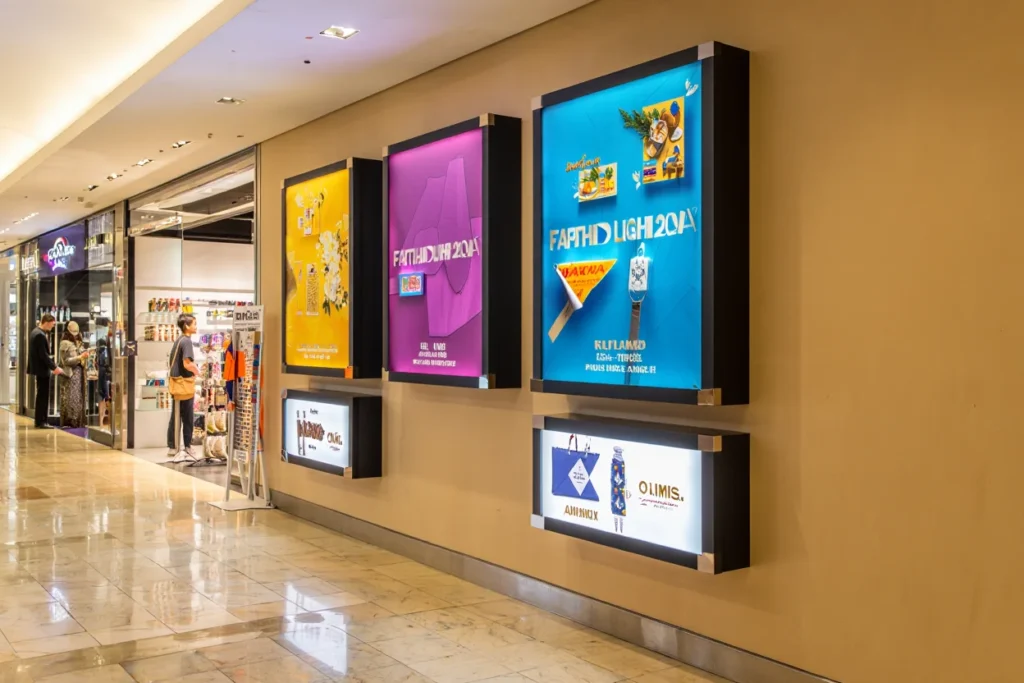
Differences
| Feature | Fabric Light Boxes | Traditional LED Lightboxes | |
| Design & Appearance | Frameless, sleek, modern look | Visible frame, bulkier design | |
| Graphic Replacement | Quick and easy — tool-free fabric swapping | Requires dismantling frame, more time-consuming | |
| Lighting | Even illumination across the fabric surface | Risk of uneven brightness or hotspots | |
| Visual Impact | Vibrant, high-quality backlit graphics | Moderate vibrancy, sometimes less dynamic | |
| Weight | Lightweight, easy to move, and install | Heavier, harder to transport | |
| Customization | Available in any size, shape, single or double-sided | Limited standard size options | |
| Energy Efficiency | Low-voltage, eco-friendly LED technology | Older models may consume more power | |
| Durability | Long-lasting fabric and aluminum construction | Prone to cracking or yellowing over time | |
| Installation Options | Wall-mounted, freestanding, ceiling-suspended | Mostly wall-mounted | |
| Cost Over Time | Higher initial cost but cheaper to update (graphics) | Lower initial cost but expensive to replace units | |
| Branding Effect | Premium, upscale appearance | Traditional, less modern impression |
Best Use Cases for Fabric Light Boxes
Retail Stores:
Fabric light box displays allow quick graphic swaps by simply tucking the fabric edge into the frame. Traditional LED panels often require tools and more time for updates.
Trade Shows and Exhibitions:
Use wall-mounted or freestanding light boxes to create attractive booths that stand out from competitors.
Airports and Malls:
Install large backlit fabric walls for advertisements, promotions, and navigation signage.
Office Interiors:
Enhance branding with customized wall-mounted fabric displays that brighten lobbies and meeting rooms.
Hospitality and Events:
Create welcoming, dynamic environments with custom displays that change effortlessly with event themes.
How to Choose the Right Fabric Light Box
When selecting your fabric light box, consider:
Size and Placement:
Choose dimensions that fit your space, whether it’s a compact corner or a full exhibition wall.
Single-Sided vs Double-Sided:
Single-sided displays are ideal for wall mounting, while double-sided options are best for open spaces.
Edge-Lit vs Backlit:
For smaller displays, edge-lit is often sufficient. For large displays, backlit fabric ensures even illumination.
Frame Finish and Color:
Custom powder-coated colors can match your brand identity.
Installation Type:
Decide if you need a wall-mounted, freestanding, or hanging system based on your display goals.
Easy Installation:
Decide if you need a wall-mounted, freestanding, or hanging system based on your display goals.
Installation Tips and Care
Easy Installation:
Assemble the light box frame using the provided connectors.
Insert the silicone edge of the fabric graphic into the frame channel.
Plug in the LED power supply — many models are simple plug-and-play systems.
Care and Maintenance:
Wipe the fabric gently with a soft, damp cloth to remove dust.
Store replacement graphics flat to prevent wrinkles.
Replace LED strips as needed (although they typically last up to 30,000 hours).
Conclusion
In today’s fast-moving world, visual communication needs to be both impactful and adaptable. Fabric light boxes over LED offer a modern, energy-efficient, and cost-effective solution that combines style with functionality. Their frameless design, vibrant illumination, easy maintenance, and customization options make them the preferred choice for businesses serious about making a visual impact. Upgrade your displays today and transform your space into a vibrant visual experience that truly stands out.
Post a comment Cancel reply
Related Posts
How Quality Signage Improves Business Visibility in Dubai
An understanding of how attractive signage boosts brand visibility and draws customers in a competitive…
The Ultimate Guide to Signboard Types for Dubai Retail Stores
Choosing the Right Sign to Match Your Brand and Location In Dubai’s vibrant retail landscape,…
Benefits of LED Advertising Screens for Dubai Businesses
The New Face of Urban Advertising You’ll notice that Sheikh Zayed Road, Downtown Dubai, and…
Top 10 Signage Trends in the UAE for 2025
Signage has evolved into more than just a marker in a city where every corner…
